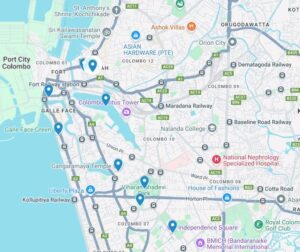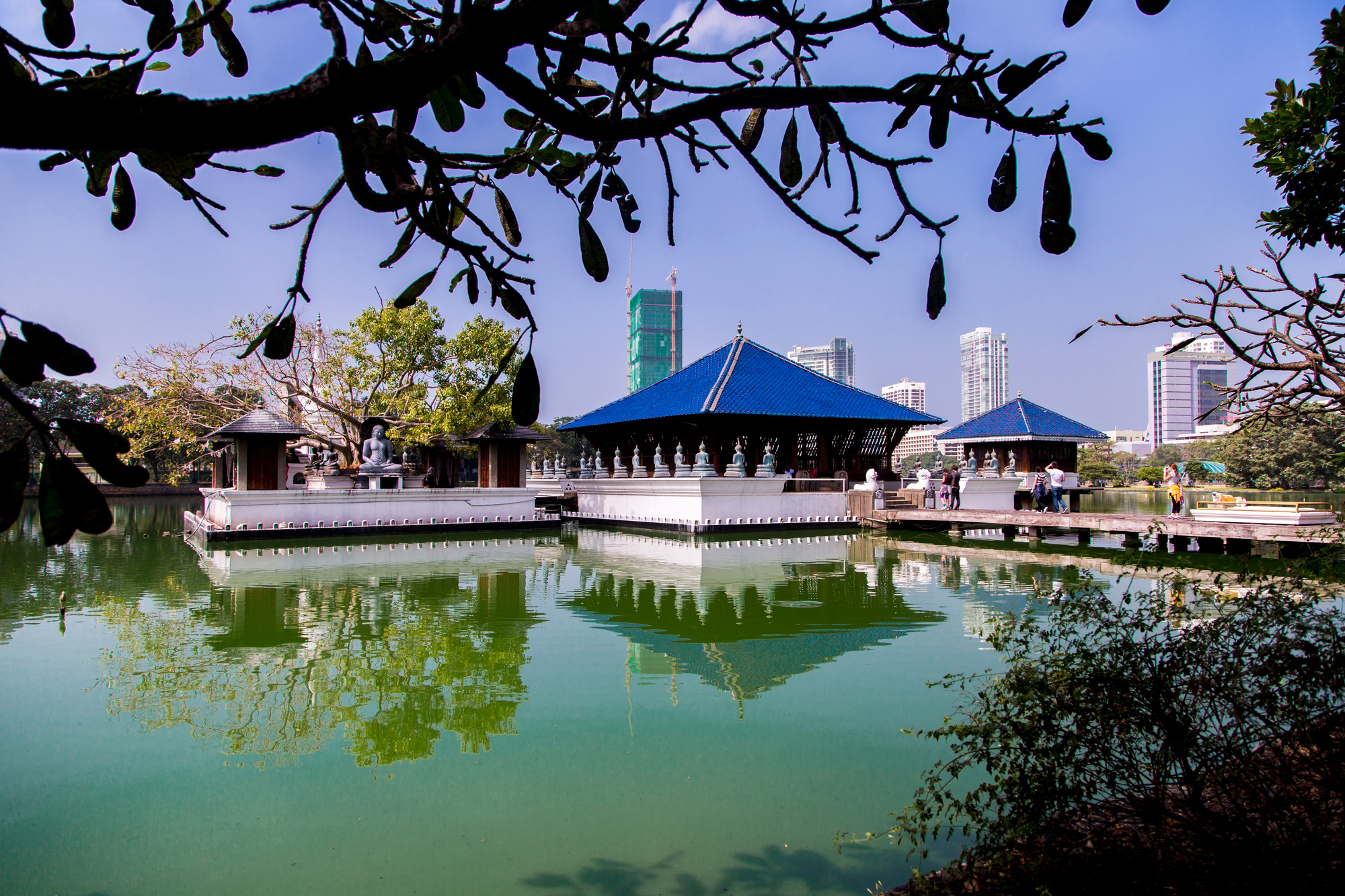Introduction to Colombo
Colombo, the capital of Sri Lanka, is often viewed merely as a transit hub for travelers, overshadowed by the breathtaking landscapes and famed beaches that the island has to offer. However, this vibrant city is a kaleidoscope of cultures, showcasing a rich tapestry woven from Sri Lanka’s diverse heritage. Nestled along the western coast, Colombo is ideally situated by the Indian Ocean, providing not only stunning coastal views but also a bustling urban environment that reflects both the past and present.
As the economic and cultural heart of Sri Lanka, Colombo is a dynamic city where colonial architecture stands in harmony wit
h modern skyscrapers. This unique blend creates an intriguing atmosphere, where ancient temples and churches exist alongside upscale boutiques and bustling markets. Here, visitors can engage in the vibrant street life that characterizes the city, sampling delicious local cuisine while absorbing the lively sounds and sights of daily life.
Despite often being overlooked, Colombo is home to numerous attractions that appeal to both history enthusiasts and contemporary travelers alike. From picturesque parks filled with lush greenery to art galleries that celebrate local talent, the city harbors hidden treasures waiting to be discovered. Travelers who venture beyond the common view of Colombo as merely a stopover will find a destination rich in experiences. Exploring the city reveals a multifaceted character indicative of its diverse population, welcoming both cultural richness and a dynamic urban lifestyle.
Ultimately, this introduction serves as a gateway to understanding Colombo, highlighting the myriad ways it reflects Sri Lanka’s identity while inviting exploration of its many hidden gems.
Galle Face Green
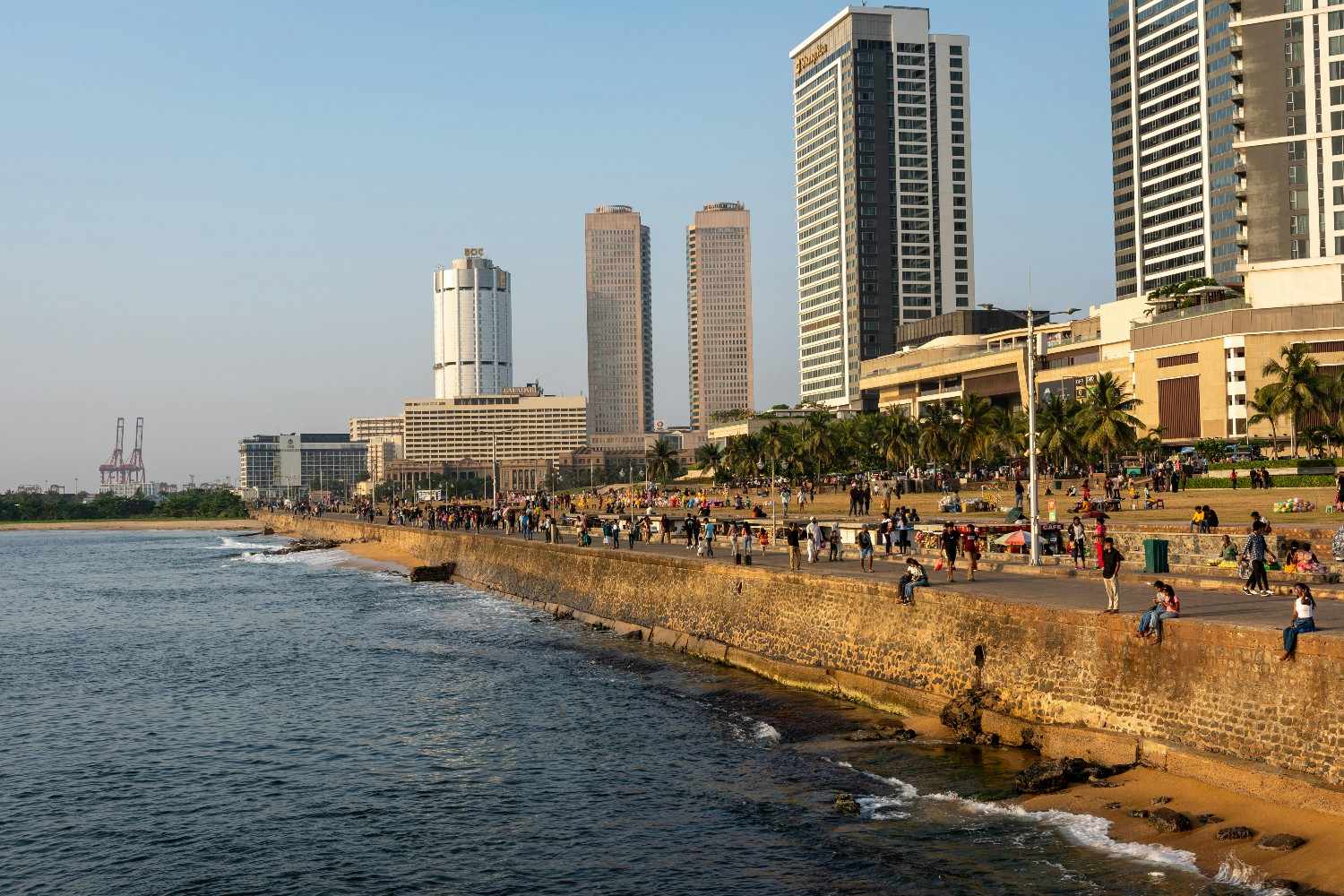
Galle Face Green is a sprawling expanse of lush green grass that stretches along the coastline of Colombo, making it one of the most iconic landmarks in Sri Lanka’s vibrant capital. This urban park not onlyoffers breathtaking views of the Indian Ocean but also provides an inviting atmosphere for both locals and tourists. The beautifully maintained lawns are ideal for leisurely strolls, picnics, and even kite flying, all while soaking in the refreshing sea breeze.
The area comes alive during the evenings, as visitors flock to experience the captivating sunset views that paint the sky in shades of orange and pink. Galle Face Green is particularly renowned for its vibrant street food scene, with numerous vendors offering a variety of local delicacies. Visitors can indulge in traditional snacks, such as “isso wadey” (prawn fritters) or “kottu roti,” a local stir-fried dish. This bustling food market enhances the lively atmosphere, making it a perfect spot for a casual dinner against the backdrop of the picturesque ocean.
For those planning to visit, early evenings are recommended, especially around sunset when the location transforms into a hub of activity. The gentle ocean waves further enhance the magical ambiance, making it an excellent place to unwind after a day of exploring the city. Nearby attractions also enhance the experience; just a short walk away is the historic Galle Face Hotel, which invites guests to enjoy a cold drink on their veranda while admiring the ocean view. Whether you’re seeking relaxation or adventure, Galle Face Green is a must-visit attraction that captures the essence of Colombo’s vibrant lifestyle. For more Photos :
Gangaramaya Temple
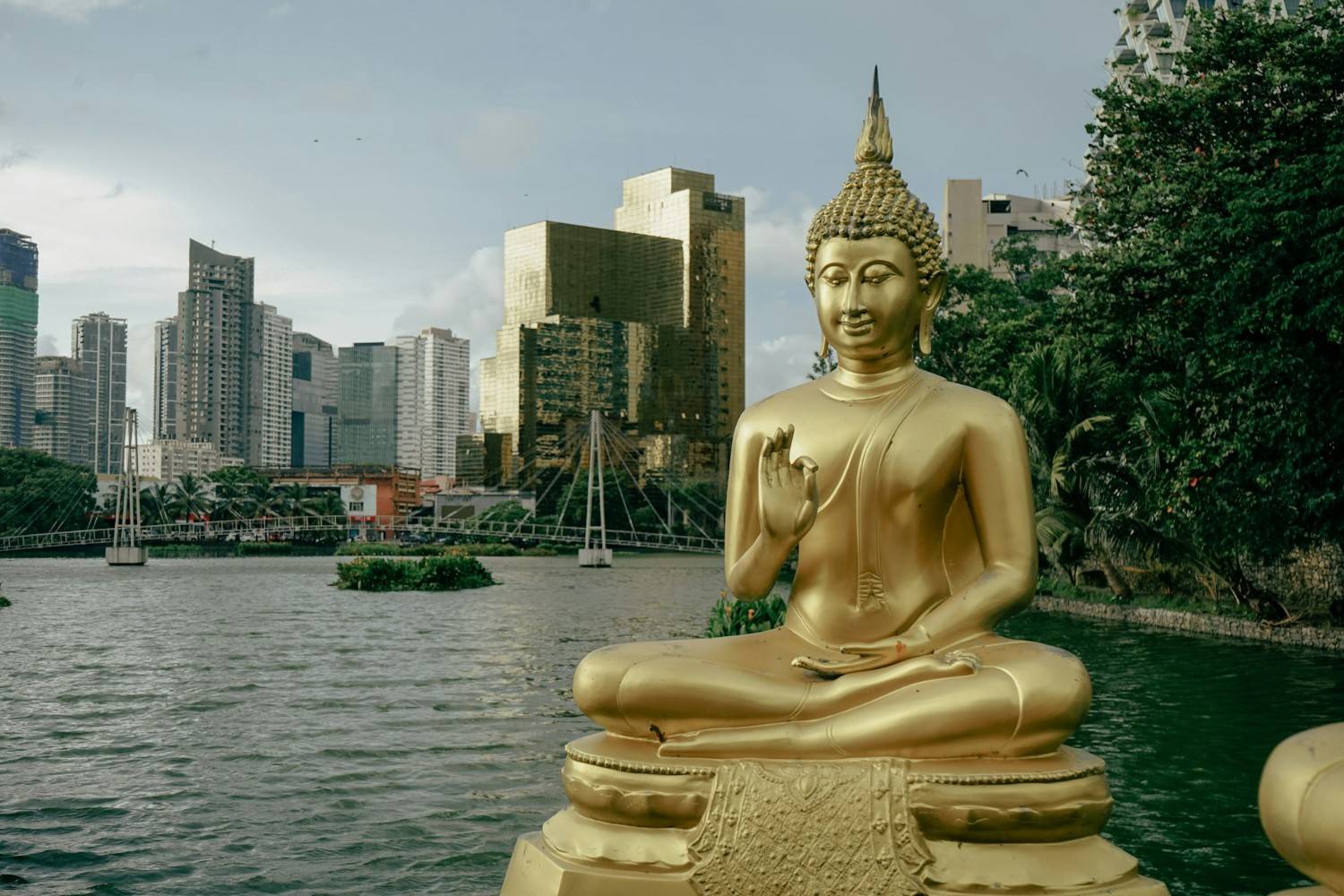
Gangaramaya Temple, located in the heart of Colombo, holds significant religious importance as a place of worship while simultaneously drawing visitors with its architectural beauty. Established in the late 19th century, this temple is a harmonious blend of modern and traditional styles, reflecting both Burmese and Thai influences. As you enter the temple premises, a sense of tranquility envelops you, serving as a peaceful retreat from the city’s hustle.
One salient feature of Gangaramaya is its collection of artifacts and relics, including a variety of Buddha statues, intricate paintings, and ceremonial items that collectively narrate the rich history of Buddhism in Sri Lanka. Among these artifacts, the temple houses a prized collection of gold and silver offerings that are of historical and cultural significance. The temple compound is thoughtfully designed, with the main prayer hall, pagodas, and the serene lake creating an ambiance conducive to reflection and spiritual inquiry.
Visitors planning to explore Gangaramaya Temple should adhere to a respectful dress code; this typically involves wearing modest clothing, such as long skirts or trousers for women and long trousers for men. Shoulders should be covered as well. The temple usually imposes a minimal entry fee, which helps maintain the site and its surroundings. It is advisable to check the latest visitor guidelines to ensure a respectful experience.
While visiting, visitors are encouraged to maintain a respectful demeanor, refraining from loud conversations and flash photography, particularly in prayer areas. This approach not only enriches your experience but also honors the sacredness of the space. Overall, Gangaramaya Temple is a captivating destination that leaves a lasting impression through its spiritual significance and serene atmosphere amidst the vibrant energy of Colombo.
Colombo National Museum
The Colombo National Museum, known as the largest museum in Sri Lanka, serves as a vital repository of the nation’s rich history and culture. Established in 1877, this institution is not only significant for its extensive collection of artifacts, but also for its role in educating visitors about the country’s heritage. The museum boasts over 100,000 exhibits that illustrate the evolution of Sri Lankan society, from ancient times to the modern era.
Among the key highlights are the Crown Jewels of Sri Lanka, which offer a glimpse into the grandeur and opulence of the island’s royal lineage. The museum also houses ancient relics and sculptures that date back thousands of years, providing context to the historical narratives surrounding Sri Lanka’s kingdoms. The exhibits span various categories, including archaeology, art, and ethnography, making it a comprehensive source for anyone seeking to understand Sri Lankan history.
When planning a visit to the Colombo National Museum, it is useful to note that the museum operates daily from 9:00 AM to 5:00 PM, making it accessible for both local and international tourists. The admission fee is modest, often priced at around 1,000 LKR for local citizens and 2,000 LKR for foreign visitors. It is advisable to consider taking a guided tour for an enriched experience, as knowledgeable guides can provide deeper insights into the significance of the exhibits, ensuring visitors grasp the cultural context behind each artifact.
Whether one is an avid historian or a casual visitor, the Colombo National Museum stands out as a must-visit attraction. By delving into its impressive collection, individuals can develop a richer appreciation for Sri Lanka’s diverse cultural fabric and historical milestones that have shaped its identity over centuries.
Pettah Market: A Vibrant Marketplace
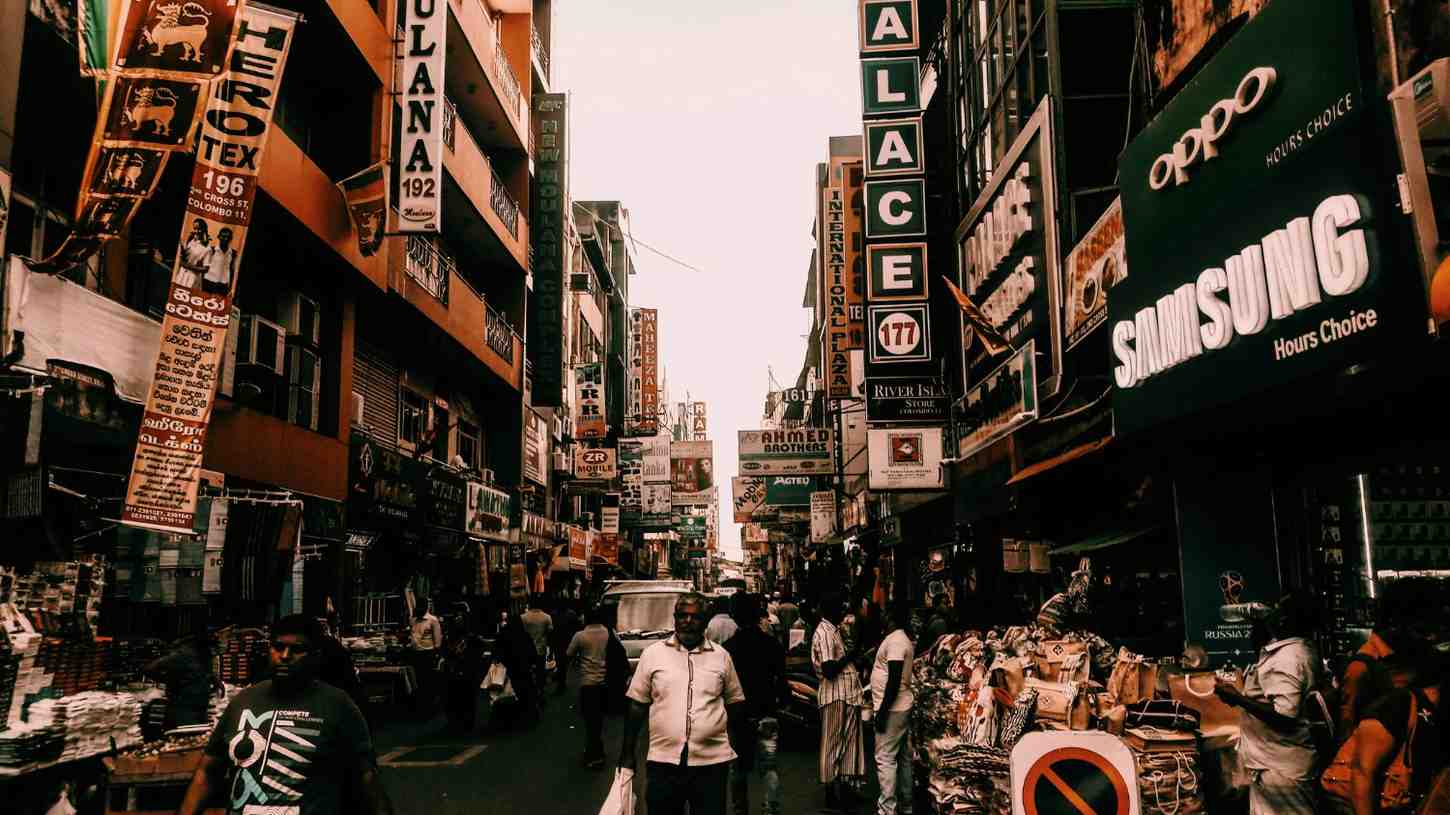
Pettah Market is undoubtedly one of Colombo’s most exciting attractions, drawing locals and tourists alike with its vibrant energy and chaotic ambiance. This bustling marketplace, often teeming with people, showcases an array of stalls brimming with fresh produce, spices, textiles, and handcrafted goods. Walking through Pettah is an experience that stimulates all the senses; the rich aroma of spices wafts through the air, while the vibrant colors of textiles and fresh fruits create a visual feast that is hard to forget.
The best time to visit Pettah Market is early in the morning when vendors set up their stalls and the market begins to come alive. This timeframe allows visitors to experience the marketplace at its most authentic, with a bustling atmosphere devoid of excessive crowds later in the day. For those who prefer to visit in the afternoon, it is essential to navigate the space with patience, as the market will be increasingly vibrant and actively frequented.
Haggling is a customary practice within Pettah Market; vendors often expect buyers to negotiate the price. As a visitor, understanding this approach can enhance the shopping experience. Engaging in friendly banter with the vendors can lead to unique finds at a better price. One can discover one-of-a-kind handicrafts, intricate jewelry, and traditional Sri Lankan fabrics that reflect the rich culture and creativity of the local artisans.
Furthermore, the atmosphere of the market is adorned with the sounds of chatter, bargaining, and lively music, contributing to an ever-present energy. From the energetic street vendors promoting their goods to the tantalizing street food available at every corner, Pettah Market presents an opportunity to immerse oneself in the heart of Colombo’s culture.
Beira Lake
Located in the heart of Colombo, Beira Lake serves as a serene retreat amidst the bustling urban landscape. This expansive lake, adorned with lush greenery and stunning views, is a popular destination for both locals and tourists seeking a peaceful escape. One of the primary attractions of Beira Lake is the opportunity for boating. Visitors can rent paddle boats or take a scenic boat tour, allowing them to glide across the shimmering waters while soaking in the picturesque surroundings. The experience is particularly enchanting during the sunset when the sky transforms into a canvas of vibrant hues reflected in the lake.
Beira Lake has a long and storied past, originally created by the Portuguese in the 16th century as part of Colombo’s colonial-era defense system. Over time, it evolved from a strategic waterway into a tranquil urban landmark. Today, the lake holds cultural and symbolic significance, often appearing in local folklore and city legends. Its serene setting amidst the city’s bustle invites visitors to pause and reflect—connecting with both Colombo’s colonial past and its modern rhythm.
For those looking to extend their visit to Beira Lake, a variety of nearby eateries and cafes provide the perfect opportunity to relax and unwind. Many establishments offer outdoor seating with beautiful views of the lake, allowing diners to indulge in scrumptious meals while enjoying the tranquil ambiance. From local Sri Lankan dishes to international cuisine, the diverse culinary options cater to all preferences, making it an ideal spot to replenish after a refreshing day on the water. Beira Lake stands as a testament to the harmonious blend of nature and urban life, making it an essential stop on any Colombo itinerary.
Old Parliament Building
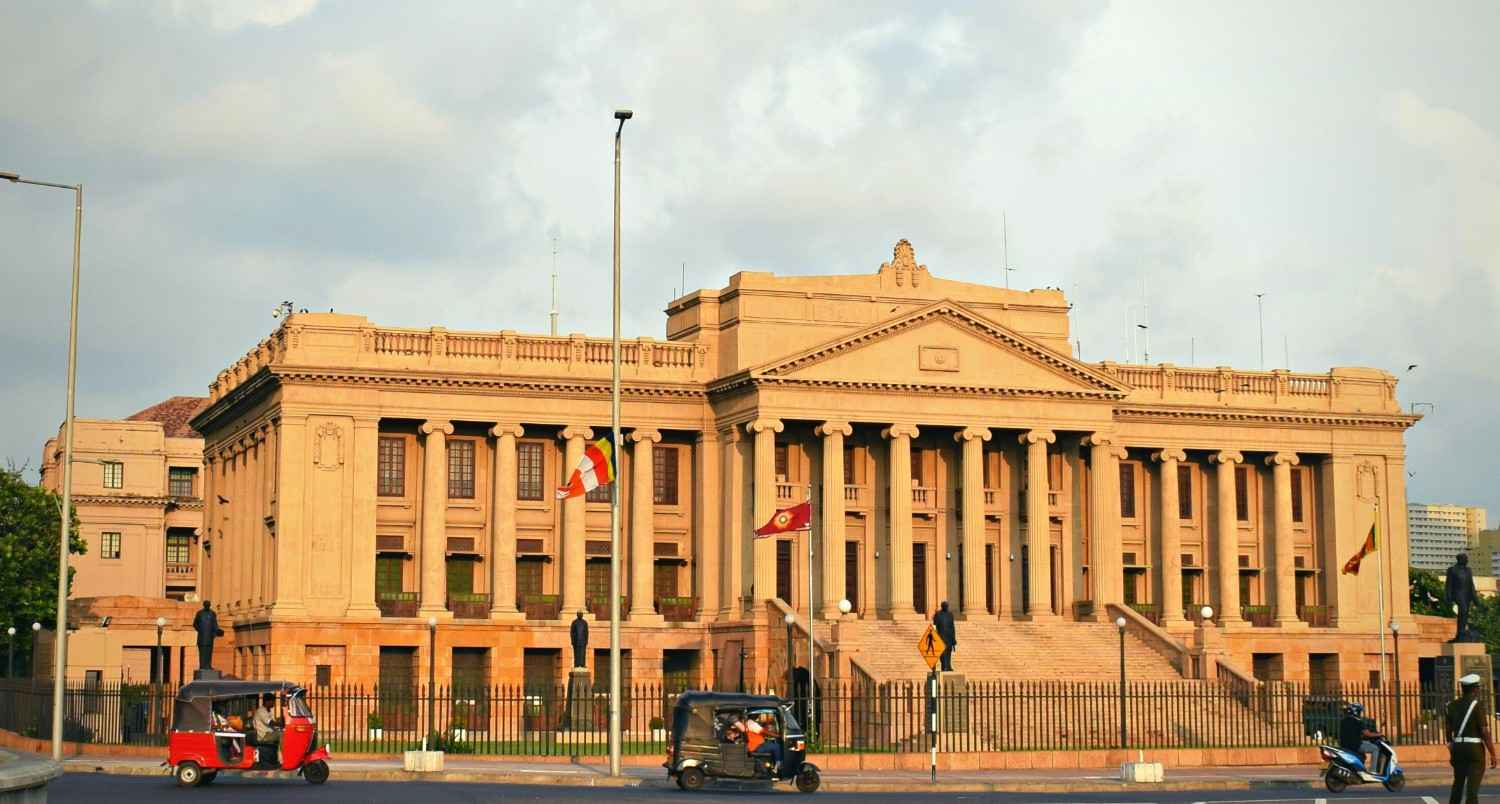
The Old Parliament Building, located in the heart of Colombo, stands as a testament to the architectural grandeur of the colonial era. Completed in 1930, this magnificent structure was designed by the British architect J. M. C. McLaren, embodying an elegant Neoclassical style that prominently includes luminous arches and ornate detailing. The building initially served as the seat of Sri Lanka’s legislature and played a pivotal role in the country’s political history, especially during the transition to independence from British rule in 1948. It was in these hallowed halls that significant legislative decisions were made, shaping the future of a nation.
The building’s historical significance extends beyond its architectural beauty. It is a symbol of the governance and evolution of Sri Lankan politics over the decades. Although the parliament has since relocated to a new complex in Sri Jayawardenepura Kotte, the Old Parliament Building remains an iconic landmark, offering insights into the nation’s legislative history. Its well-maintained facade and lush gardens provide a picturesque setting that invites visitors to ponder the political journey of Sri Lanka.
For photography enthusiasts, the Old Parliament Building offers numerous captivating angles; its proximity to Galle Face Green provides an opportunity for stunning sunset shots. Visitors can capture the building’s reflection in the adjacent waters while enjoying the vibrant atmosphere of the nearby area. Additionally, other must-visit sites, such as the Independence Memorial Hall and the National Museum of Colombo, are within a short distance, making it easy to incorporate a visit to the Old Parliament Building into a broader exploration of Colombo’s rich heritage and culture.
Viharamahadevi Park
Viharamahadevi Park, a picturesque oasis in the heart of Colombo, serves as an ideal retreat for both locals and visitors. Established in the early 1900s, the park is not only the largest in the city but also a historical landmark named after Queen Viharamahadevi, the mother of King Dutugemunu. Its rich history intertwines with the cultural significance of Sri Lanka, making it a prominent point of interest for those exploring Colombo.
The park is renowned for its luscious greenery and diverse flora. Walking paths meander through well-kept gardens filled with vibrant flowers and tall palm trees, offering a serene background for leisurely strolls. Visitors can engage in various activities such as picnicking on the expansive lawns, jogging along the trails, or simply relaxing in the shade. Additionally, the park features several amenities that enhance the outdoor experience, including playgrounds for children, open-air exercise equipment, and plenty of benches where one can sit and appreciate the natural beauty surrounding them.
One of the most striking aspects of Viharamahadevi Park is its stunning view of the Independence Memorial Hall, located just across the road. This grand structure commemorates Sri Lanka’s independence and serves as a popular backdrop for photographs. Visitors often combine a visit to the park with a journey to the memorial, making it an excellent spot for cultural exploration.
For those planning a day in the park, it is advisable to visit during the cooler parts of the day, such as early morning or late afternoon, to fully enjoy the scenery without the heat. Plenty of parking is available nearby, and access via public transportation is straightforward, ensuring a hassle-free experience in this vibrant part of Colombo.
Colombo Fort
Colombo Fort is a historic area that holds significant importance in the narrative of Sri Lankan history, particularly due to its colonial heritage. Initially constructed by the Portuguese in the 16th century, this area evolved dramatically over the years, transforming from a military stronghold into a thriving commercial hub. As you stroll through the streets of Colombo Fort, the remnants of its colonial past are evident in the architecture, with a blend of Portuguese, Dutch, and British influences painting a picturesque urban landscape.
Among the notable landmarks within Colombo Fort is the Dutch Museum, which is housed in a restored Dutch colonial mansion. This museum offers fascinating insights into the area’s colonial history and showcases artifacts that reveal the intricate tapestry of local culture and trade. Another prominent site is the iconic Clock Tower, a remnant of British rule, which stands as a testament to the passage of time and the evolving identity of this vibrant neighborhood. These landmarks not only serve as historical markers but also as focal points for the cultural narratives that define the area.
When visiting Colombo Fort, one of the best ways to enhance your exploration is through guided tours. These tours provide in-depth knowledge about the history and significance of the architecture, enriching your understanding of the area. Additionally, there are various local dining spots where one can indulge in authentic Sri Lankan cuisine, offering travelers a chance to experience the culinary landscape of the city. Whether you are wandering through the bustling streets or savoring local dishes, Colombo Fort promises an enriching experience that seamlessly blends history with modernity.
Local Cuisine and Dining Spots
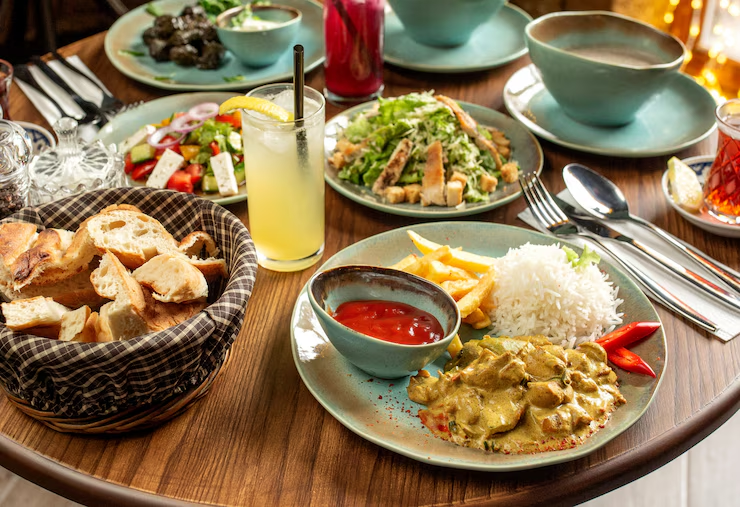
Colombo, the bustling capital of Sri Lanka, boasts a vibrant culinary scene that reflects the country’s rich heritage and diverse flavors. To truly experience the essence of Colombo, one must delve into its local cuisine, which ranges from traditional dishes to contemporary dining options. A signature Sri Lankan dish that visitors should not miss is kottu, a flavorful stir-fry made from chopped roti, vegetables, and an array of spices, often accompanied by chicken or egg. Street food stalls throughout the city serve kottu, providing a casual yet authentic dining experience.
Another beloved dish is hoppers, a type of pancake made from fermented rice flour, often served with an egg in the center or accompanied by a variety of sambols and chutneys. This versatile dish can be enjoyed at any time of day, from breakfast to dinner. For a more upscale experience, one can visit restaurants like Ministry of Crab, which specializes in exquisite seafood, particularly its namesake dish featuring fresh crab cooked in signature sauces. The establishment emphasizes local ingredients and authentic flavors, making it a must-visit for food enthusiasts.
In addition to these traditional dishes, Colombo’s contemporary dining scene showcases trendy cafes and international cuisine. Locations such as the Whole Foods Cafe and The Good Market offer health-conscious options, appealing to those seeking lighter fare made from fresh, local produce. For dessert, don’t forget to try the famous Sri Lankan curd served with honey, which can be found at various eateries across the city. With an array of dining venues ranging from casual street-side stalls to elegant fine dining restaurants, Colombo’s culinary landscape promises to satisfy every palate.
Colombo Attractions Map – Hold the Pins to View Top Sights, Dining, and Travel Tips
